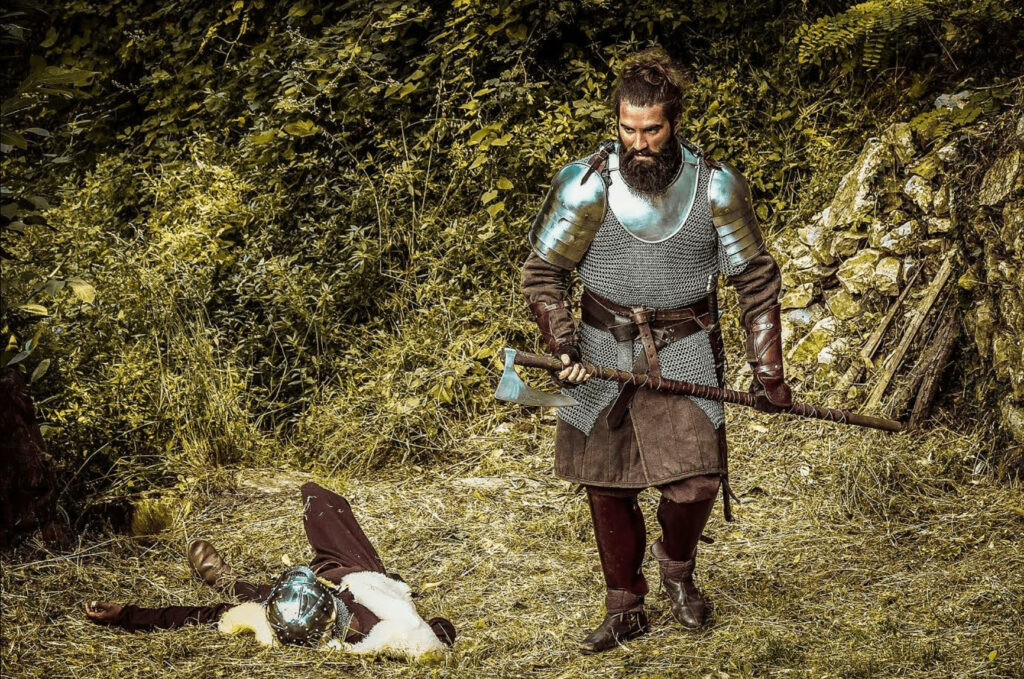Blog
How to Write a Compelling Essay on Viking History
Introduction – who were Vikings?
The name Viking originates from the expression víkingr, meaning pirate in the early Scandinavian languages. These pirates were pagan Norwegian, Swedish, and Danish seafaring warriors. They colonized wide areas of Europe from the 9th to the 11th century. The reasons why they went on expeditions are varied. But the most significant are overpopulation at home and the relative helplessness of victims abroad. At home, these Scandinavians were independent farmers, but at the sea, they were merciless pillagers. The Vikings were led by a landowning chieftain, clan heads, and their retainers. The clan consisted of freemen and an energetic young man who was looking for adventure and treasure overseas.
Writing a comprehensive essay on Viking history
Writing an engaging and informative essay on Viking history is not much different from crafting a paper on any other broad and interesting topic. It requires a combination of itemized research, critical analysis, and captivating storytelling. We offer you a step-by-step guide to help you create a mesmerizing essay that will bring you great academic success. Let’s begin and see how to write a compelling essay on Viking history.
Unearth an Intriguing Topic
Viking history is a wide and endless field of information. Yet, every student should select a specific aspect that interests you. It should be suitable for exploration within the scope of your essay. You can consider topics such as famous Vikings in history or Vikings raids, exploration, and settlement. Try to explore their religion and mythology. You can read all about their social structures and how did Vikings affect European society and other civilizations. Try to focus on one of these segments of Viking history and immerse yourself in deeper research on that specific topic.
Navigate the Depths of Research
Keep in mind that you should find credible sources. One of them could be EduBirdie, an essay writing service that you can tell do my essay any time. Academic books, reputable sites, and journal articles could be other trustworthy sources. Your starting points should also be Norse sagas and archeological findings. Consult historical documents to provide firsthand insight and evidence. All these sources will help you to get a deeper insight into the topic you want to deal with. Furthermore, they will ensure that the information you incorporate into your essay is truthful and reliable.
Forging a Mighty Thesis Statement
The next step in your writing journey is creating a clear and concise thesis statement. It is a short statement, usually one sentence. It should present the main argument or perspective of your assignment. Try to make your thesis statement debatable. It would give you the chance to approach your topic from several angles. Moreover, the thesis statement should be supported by evidence from your research. This way, your essay will become more receptive to reading from the very beginning.
Plotting Your Course: Crafting an Outline
Outlining your essay will help you organize your ideas. You will be able to structure your essay logically. This is the time to create common parts of an essay that include an introduction, body paragraphs, and conclusion. Keep in mind that each paragraph should focus on a specific aspect of your topic.
Think about intriguing introduction
Come up with a captivating introduction. Use the introduction to grab the readers’ attention. Start with an intriguing fact or a thought-provoking question. For instance: Did You Know that Vikings were skilled navigators who sailed vast distances across treacherous seas using only the stars and natural landmarks for guidance? Furthermore, it could also be a vivid description of a Viking event or artifact. You can try it with Viking longships which are marvels of engineering. They were designed for both speed and shallow draft, enabling raids on unsuspecting coastal settlements and monasteries. The introduction should also announce the topic and issues the essay will address. It should show what readers will gain from reading your essay.
Arm Yourself with Evidence and Insight
Support your thesis with relevant evidence from your research. That means you should use quotes from primary sources, scholarly interpretations, and archeological findings. The main part is considering different perspectives and interpretations. That way, you will provide a nuanced understanding of your topic. You will also convince readers that you have approached the topic from different angles. It brings you credibility and future success in the academic world.
Sharp Swords and Clear Words: Writing with Precision
Try to create brief and clear sentences. It will help you to convey your ideas effectively. Using jargon is a big no-no in writing research papers. You should also avoid overly complex language that might confuse your audience. At the very beginning, define key terms and concepts. That way, you will ensure clarity, especially if you deal with unfamiliar aspects of Viking history.
Bringing History to Life: Illustrations and Examples
Some people understand better through examples. Use vibrant examples and illustrations to bring your arguments to life. For instance, if you write about Viking seafaring battles, describe the appearance of their longship in detail. Include some images, illustrations, maps, and diagrams to enhance understanding and visual appeal. You can download convenient images from stock photo websites. Add an explanation of what readers can see in every picture.

Facing the Foes: Addressing Counterarguments
This is a very important segment of your research paper. In this part, you should acknowledge and address potential counterarguments to your thesis. It will help you demonstrate a systematic understanding of the topic. Refute these counterarguments with evidence and logical reasoning. Try to acknowledge their validity while explaining why your arguments are still more convincing.
Don’t forget to create a memorable conclusion
The conclusion serves to summarize the main points of your essay. This is the part where you restate your thesis. Make an effort to reflect on the significance of your findings and broaden your implications. The conclusion should leave the reader with a thought-provoking takeaway. It should call for further explanations on the topic.
Refinement and Polish: The Art of Revision
No matter how confident you are that the essay you wrote is excellent, you shouldn’t skip revising and editing. Review your essay carefully to ensure clarity, accuracy, and coherence. It is essential to check for grammar and spelling errors. Try to refine your language for precision and impact. Maybe you could seek feedback from some peers or educators. It will ensure the improvement of your essay further.
Conclusion
To wrap it up, writing a fascinating essay about Viking history is manageable if you apply the tips mentioned here. Vikings were pioneers in the 9th to the 11th centuries, and they went through a lot of discovering and conquering. Numerous interesting topics can serve as the subject matter of your essay. That could entail life during the Vikings and the contribution of the Vikings to the world. Viking Project ideas, like making Viking handicrafts or playing historical plays, will increase the interest of your essay and make it more real. After completing research, brainstorming creative ideas, and reveling in the topic, you can make your readers feel as if they knew the Vikings. Therefore, go ahead to be curious, reflect, and get involved in the exciting world of Viking history!

